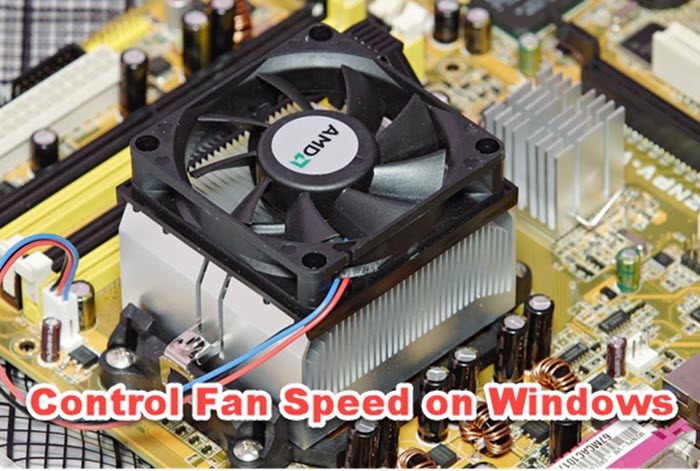Why is it important to monitor CPU Fan Speed in Windows?
The mechanism of CPU fans is pretty straightforward. They keep a periodic check on your PC’s temperature and get turned on and off accordingly. Every PC has air vents to allow the heat to escape. If you find your CPU fans to be running constantly, it’s a sign that your system is overloading and that may cause problems with your power adapter too. Thus, it can be very important to maintain a balance with the CPU fan speed while also keeping your PC’s temperature in check.
How to control Fan Speed on Windows 11/10
You can check, control, increase, monitor or change the CPU Fan Speed safely in Windows 11/10 by following these steps. Here, we will be primarily discussing how you can keep your CPU fan speed in check using the Control Panel, your PC’s BIOS control, or a third-party fan controller SpeedFan.
1] Control CPU fan speed via the Control Panel
Here’s how you can access fan control settings in your Control Panel:
Open the Control Panel and click on Hardware and SoundHere, click on Power Options and further select Choose when to turn off the displayOpen the Advanced power settings pageFrom this subsequent dialog box, locate Process power managementHere, select System Cooling Policy and toggle the setting to ‘Active’
Save these changes by clicking on Apply and you can then exit the window. The System Cooling option is absent in Windows 11 computers, so if you’re using that version of the Windows OS then you should go for the second and third ways. Read: Best Laptop cooling software.
2] Use BIOS/UEFI to control the CPU fan speed
The Advanced Startup option BIOS has fan controlling settings in it which may differ based on your computer. Here’s how you can access and modify those settings: How to open BIOS settings
You can either, restart your PC and when it boots back up, press the ‘Delete’ and ‘F12’ keys togetherAlternatively, you can follow this trajectory: Settings > Update & security > Recovery > Advanced Startup > Restart Now > Troubleshoot > Advanced options > UEFI Firmware settings > Click Restart
How to use BIOS
On the BIOS front page, locate Fan Control SettingsGo to Monitor > Status > Fan speed controlHere, look for RPM settings. Once found, select the CPU fan to increase or decrease its speed with RPM as a unitSave these changes and press Esc till you reach the menu option.
Read: Best practices to keep your computer cool.
3] Control CPU Fan speed using SpeedFan
The free app SpeedFan can help you find the cause behind a heightened CPU fan speed with ease. It searches your computer for informative chips and puts up voltages, speeds, and temperatures on display (things that your BIOS may fall short on). SpeedFan’s technology known as S.M.A.R.T. (Self-Monitoring Analysis and Reporting Technology) runs through your motherboard and video cards to extract relevant data. Here’s how you can use it.
Download, install and run the app on your PCWhen the app’s main window opens, select ConfigureNow, visit the Fans tab and wait for a list of all the fans on your PC to show upSelect the CPU fan and use the Response curve to adjust its speed
The Response curve plots down the PC’s temperature and the relevant fan speed. The upward-sloping graph suggests that higher temperature leads to higher fan speed, but you can configure that to your liking. There are several free fan speed controller software to SpeedFan like HWinFo, so if you don’t find its interface or control effective enough, you have got other options. If you’re looking to go overboard, you can always purchase an external fan hub (for your desktop) or a cooling pad for your laptop.
How do I fix CPU Fan Speed errors?
The CPU Fan error is usually triggered when you’ve turned on your PC. As such, the fan error occurs before Windows 10 OS boots and is probably caused due to some hardware issue, and It may not be due to overheating. The most common cause why a CPU fan would run at full speed is that its sensor is not working properly. The solution here is to replace the fan itself. But you need to see that the processor is not always hot. You can use third-party applications for this purpose. These posts will help you if a CPU Fan Speed Error is detected or your CPU Fan runs at full speed always. You may want to also to check your PC’s total power consumption. Read next: How to make your computer run like new again.

